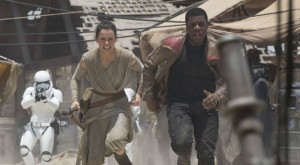Let’s face it. Middle managers are not that glamorous. They get stuck with some pretty odious responsibilities, like figuring out how to reduce costs, telling RIF victims bad news, and enforcing policies that they may not always agree with or understand.
All the glory tends to go to the executives, along with the good compensation. Most executives trend to be wary of the middle during transformative change, as they often fall into passive resistance. Middle managers need to see themselves differently in order to embrace change.
However, these are the exact people you need to execute change effectively. And one way to do that is to write them into your change narrative. The most powerful of persuasive methods is that of identity. Your middle managers need to identify with the change in order to embrace it.
Your change narrative… You got that, right? The big story about why the change is important. The villain or nemesis that must be defeated. Competition, disruption, regulation, all make great villains. Often change narratives are more internal, focusing on our lack of discipline, our “stuckness” – but these will never do, because they are not compelling. They sound like that old say: “Work Smarter, Not Harder”. By pushing the villain outside – you allow your team to become the means of (rather than the obstacle to) achieving the goal.
Our change narrative needs to expose “the horrible consequence of inaction”. It is a question that we often ask when looking at threats and risks, “What happens if I do nothing”. Sometimes the best strategy is to wait it out. But if we have already decided to do something “Drastic” like transformative change, we need to create a blistering narrative focusing on these consequences. Think about outsourcing, downsizing, acquisition, pay cuts, or the ultimate, shutdown. Threats must be immanent, urgent, realistic. You need to sell it. What happens when the “villain” wins.
The best narrative is a hero story. The typical hero story has three acts:
In act one the hero is minding her own business, when the villain arrives on the scene. She is reluctant to take on the challenge until the villain becomes a real threat. Faced with many poor choices, she agrees to fight.
In act two, she equips herself for the battle. She trains. She fights, she loses. Perhaps she is focused on symptoms not causes. She has yet to take on the “Big Boss”. The villain is winning. It looks hopeless. She is exhausted. Her team is giving up.
At the beginning of a third act, a new strategy or weapon appears. It may not look like a winning idea, but it is the last hope. She rallies her forces and pitches the idea. Most of the third act is the team preparing for battle. Finally the Big Boss appears. He is terrifying. Our hero stands her ground. Hard to tell how it’s going to go. But the strategy works, and the villain is defeated. The team rallies around their savior, all is well in their world. Until the next time…
The story is as old as cave drawings. We all know it by heart. Rocky, Star Wars, Hunger Games take your pick. The thing is, we love those stories. We identify with the hero. For a little while, we feel invincible, powerful, significant.
If you want to transform your culture, your organization, you need to create heroes. Your middle managers, the ones who define the systems and processes need to see themselves in the hero role. Your narrative needs to make that clear. Middle managers often see themselves as stewards, keeping things running smooth, not rocking the boat.
If you want transformation, they need to see themselves and their role differently. You need to make it clear that we need a hero. They need to say:
I. Am. That. Hero.
If you want some examples of hero stories with a business twist, consider reading “The Goal” by Eliyahu Goldratt and Jeff Cox or “Outbound Air” by Tom Foster. If you have other examples of business books that represent the hero story genre, I invite you to recommend them in the comments below.

No Comments